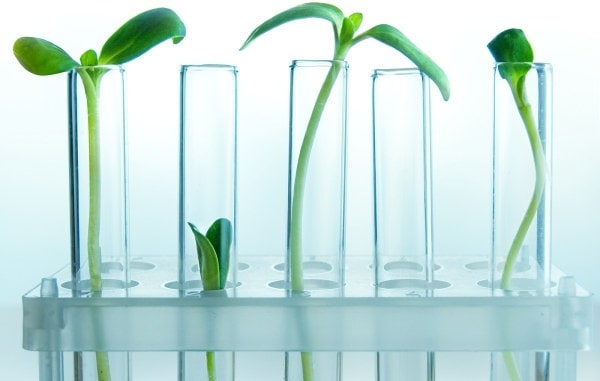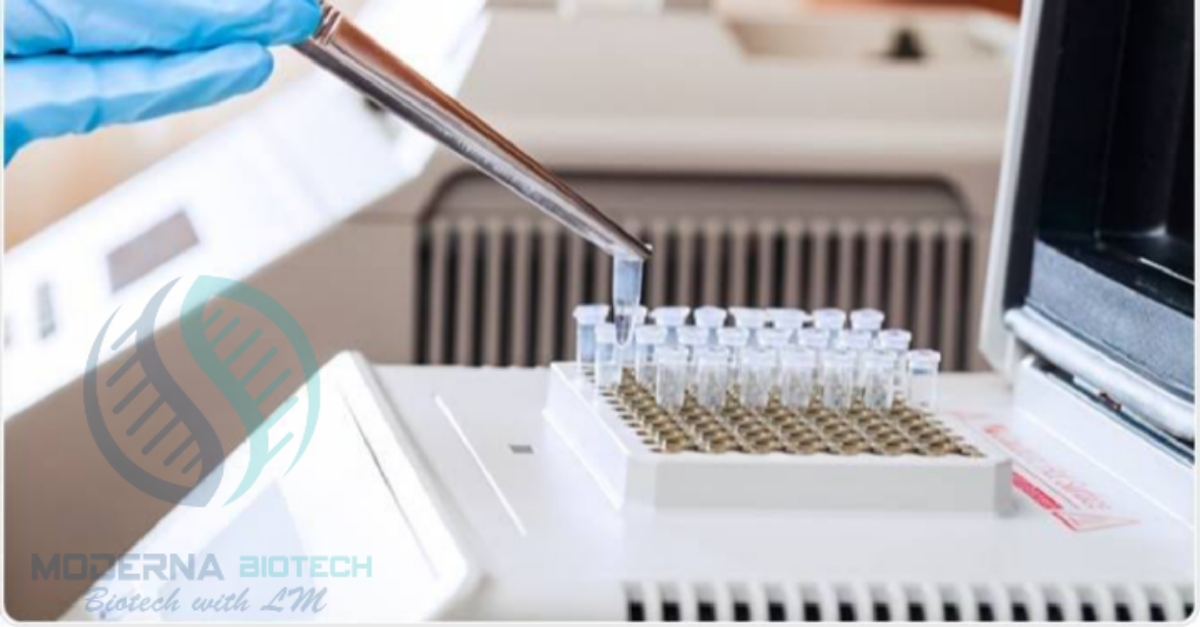Top 3 Methods of plant transformation

Different methods of Plant transformation
1- PEG mediated transformation:
Polyethylene glycol is also known as PEG is a polyether compound having varied applications. This is one of the chief methods of plant transformation. The biological uses of this compound comprise being used as a precipitant for isolation of plasmid DNA and protein crystallization. This compound also used as a fusing agent in the transformation experiment. Polyethylene with Ca + permits the membrane to become charged and let the entry of the gene.
- In the presence of divalent cations (using Ca+2), PEG or polyethylene glycol disrupts the plasma membrane of protoplasts and renders it permeable to the naked eye.
- In this manner, DNA then enters the nucleus of protoplasts and integrated with the genome.
- This technique involves protoplasts’ isolation and their addition, and suspension of plasmid DNA monitored by slow addition of 40% PEG-4000 (weight/volume) dissolved in mannitol and calcium nitrate solution.
- Protoplasts get transformed as this mixture is incubated.
Advantages of PEG-mediated transfer:
- Here in PEG-mediated transformation, a large number of protoplasts can be transformed simultaneously.
- This method could be successfully used for a wide variety of plant species.
- The main advantage of PEG-mediated transformation is that protoplasts can be transformed and isolated in a number of species.
Limitations of PEG-mediated transformation:
- The disadvantage of PEG-mediated transformation is that the DNA is susceptible to degradation and rearrangement.
- Random integration of foreign DNA into the genome may outcome in unwanted traits.
- It is quite difficult to regenerate plants from transformed protoplasts.
- Regeneration of fertile plants from protoplasts is tricky.
2-Biolistic method of plant transformation
Biolistic transformation is also recognized as particle bombardment. This is one of the chief methods of plant transformation. It could be referred to as the delivery of DNA into plant cells by high-velocity particles of tungsten or gold. DNA delivery by biolistic transformation is a physical process that does not depend on bacteria. It has become an effective and versatile transformation method for numerous species especially monocot plants.
Advantages of biolistic transformation:
- Firstly, It is one of the most efficient methods of plastid transformation
- Secondly, The plus point of the biolistic method is its effective penetration and high transfer frequency.
- Here transient and stable expression is possible
- No extraneous gene or no carrier DNA is required
• Only a few cells and a small amount of nucleic acid are required for efficient transformation. - Biolistic transformation is a physical process of accelerating DNA into the plant tissue that is not dependent on species limitation or host specificity e.g. Agrobacterium-mediated plant transformation. Before biolistic technologies, the transformation of crops was not attainable.
- Its key advantage has been in the area of organelle transformation.
- Due to high transformation efficiency, it is the preferred method for chloroplast transformation.
Disadvantages of biolistic transformation:
- Firstly, The chief disadvantage of biolistic transformation is that it needs special instrumentation, also in the early stages of its development.
- Secondly, The resulting plants of biolistic transformation contain multiple highly complex inserts susceptible to silencing and recombination.
- There is a high cost of equipment and microcarriers.
- There is difficulty in obtaining a single copy of the transgenic event.
Agrobacterium-mediated plant transformation:
Agrobacterium-mediated plant transformation can be defined as a highly complex and advanced process containing genetic determinants of both the host plant cell and the bacterium. This is one of the chief methods of plant transformation.
- Agrobacterium tumefaciens is a gram-negative and soil-borne bacterium. It is motile and rod-shaped and fits the bacterial family of Rhizobiceae. This is treated as the most effective plant genetic engineer.
- It is the most commonly studied species in the genus.
- It only infects plants so it absolutely not harmful to human
- Activated agrobacterium transfers a specific gene segment known as transfer DNA from Ti plasmid. As the transfer DNA is stably integrated into the chromosomal DNA in the nucleus of the host plant, genes for tumor-inducing factors and opine synthesis on the transfer DNA are transcribed in the infected cell.
Steps of Agrobacterium-mediated plant transformation:
The agrobacterium mediated plant transformation involves certain processes that are as follows;
- Firstly gene of interest is isolated from source organisms
- Secondly, a functional transgenic construct is developed which contains the gene of interest. Then this construct act as a promoter to drive expression and then codon modification takes place if a successful increase of protein production is required.
- Thirdly, insert the transgene into the Ti plasmid.
- Fourthly, transfer DNA is introduced into the agrobacterium.
- Fifthly, the mixture of transformed Agrobacterium with plant cells allows the transfer of transfer DNA into plant chromosomes.
- Finally, transformed cells regenerated into genetically modified plants.
Role of Ti plasmid in Agrobacterium-mediated transformation:
Ti plasmid:
A Ti plasmid is primarily a piece of DNA having a circular shape. This is mostly found in almost all bacteria. This natural ability to manipulate the genetic makeup of plants was the foundation of plant transformation by agrobacterium.
Agrobacterium tumefaciens:
Agrobacterium tumefaciens is a general naturally found soil bacterium that may cause crown fall and has the capability to present new genetic material into the plant cells. The introduced genetic material is called transfer DNA which is located on the Ti plasmid.
- This natural ability to present the genetic makeup of plants was the foundation of plant transformation by agrobacterium.
- Agrobacterium-mediated plant transformation is now the most commonly used method of genetic engineering of plants due to its high efficiency.
- In the beginning, it was thought that this agrobacterium only infects dicotyledonous plants but later it was established that it can also use monocotyledonous’ transformation such as rice.
During the process of transformation, many components of the Ti plasmid allow effective transfer of the gene of interest into plant cells. These include
- Border sequences of transfer DNA define the DNA segment to be transferred into the genome of the plant
- Virulence genes of vir genes are essential for transferring the transfer DNA region to the plant but are not themselves transferred
- And the modified transfer DNA region where the genes that cause the formation of crown gall are removed and replaced with the genes of interest.
In the genetic engineering of plants, the Ti plasmid mainly used to carry foreign genes into plants cell. It is the disease-causing agent of agrobacterium tumefaciens. The Ti plasmid has altered the DNA region and can be effectively used to insert the desired genes into plant chromosomes.
See also Steps of plant tissue culture




